By J. Ty Hopkins — As a cyclist and exercise scientist, I’ve always been curious about the limits of the human body. How fast can it go? How much work can it do? How far can it go? How much recovery does it need? To what extent can it repair itself? Those are questions that are extremely difficult to answer, but over time, I’ve learned a little about what my body and mind can do.
When I was younger, I really wanted to be fast. That was all that mattered. Everything was a race, and riding a bike was no different. I raced road, cross country mountain, and cyclocross. I also ran 5k and 10k races and muddled my way through the swims only to get to the bike portions of various triathlon events. My body and mind seemed to accept the high intensity, but one thing made all of these races exhausting: the starts. I stressed about the fast starts and the high tempo. I wanted the racing without the stressful starts
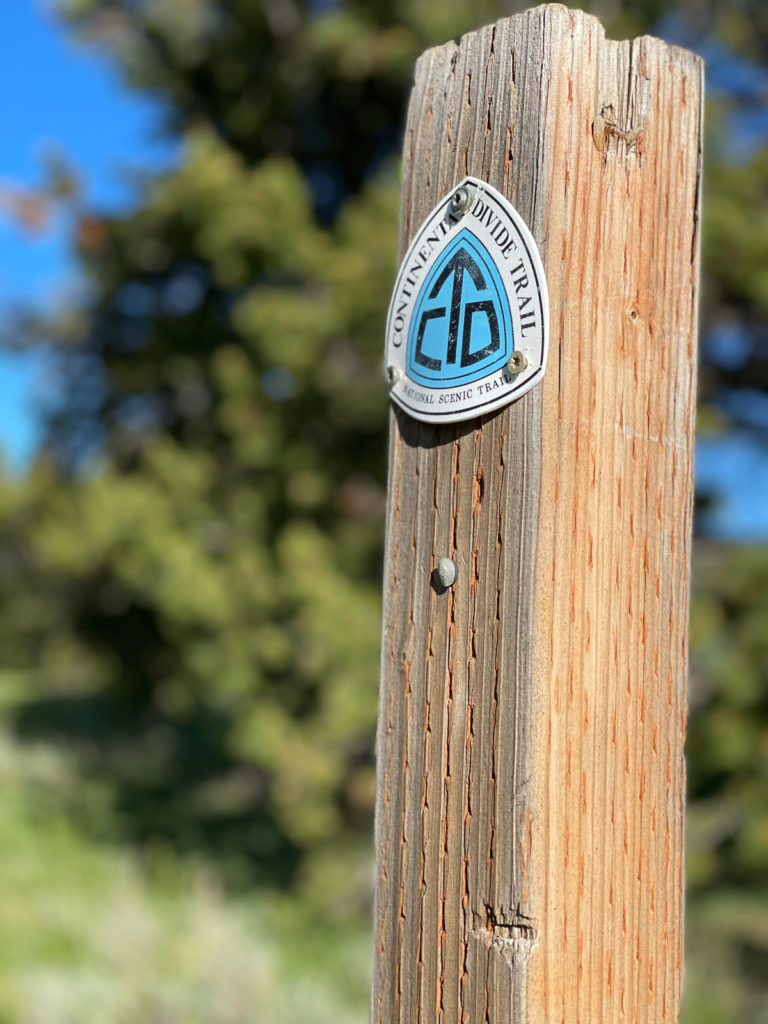
In 2010, I happened on a piece in Outside magazine with the catch phrase, “The Hardest Bike Race in the World is not in France.” I bit. The article talked about an underground genre of bike racing: ultra-racing or bikepacking. The events are self-supported: no aid stations, no support from other people, no entry fees, and no prizes. Each rider is expected to follow a specific route, over long distances, while providing your own support. The granddaddy of these ultra-races is the Tour Divide (TD), which follows the Great Divide Mountain Bike Route from Banff, Alberta, Canada to the Mexican border crossing at Antelope Wells, NM (2700+ miles). The route is mostly dirt, loosely following the continental divide, with a couple hundred thousand feet of climbing.
Between my sense of adventure and my desire to transition away from “fast” races to long races, I was hooked. I started riding longer, pushing my body to incremental extremes. In 2013, I raced the Colorado Trail (CTR). It was brutal, and more than I was prepared for. I finished, but the race left multiple marks on my psyche. For almost a year after the CTR, I wanted nothing to do with ultra-racing, but gradually I realized the vast amount of satisfaction that came from that adventure. As the pain faded, my enthusiasm grew, and I started thinking more about the incredible sights and feelings I experienced. The Tour Divide had my full attention.
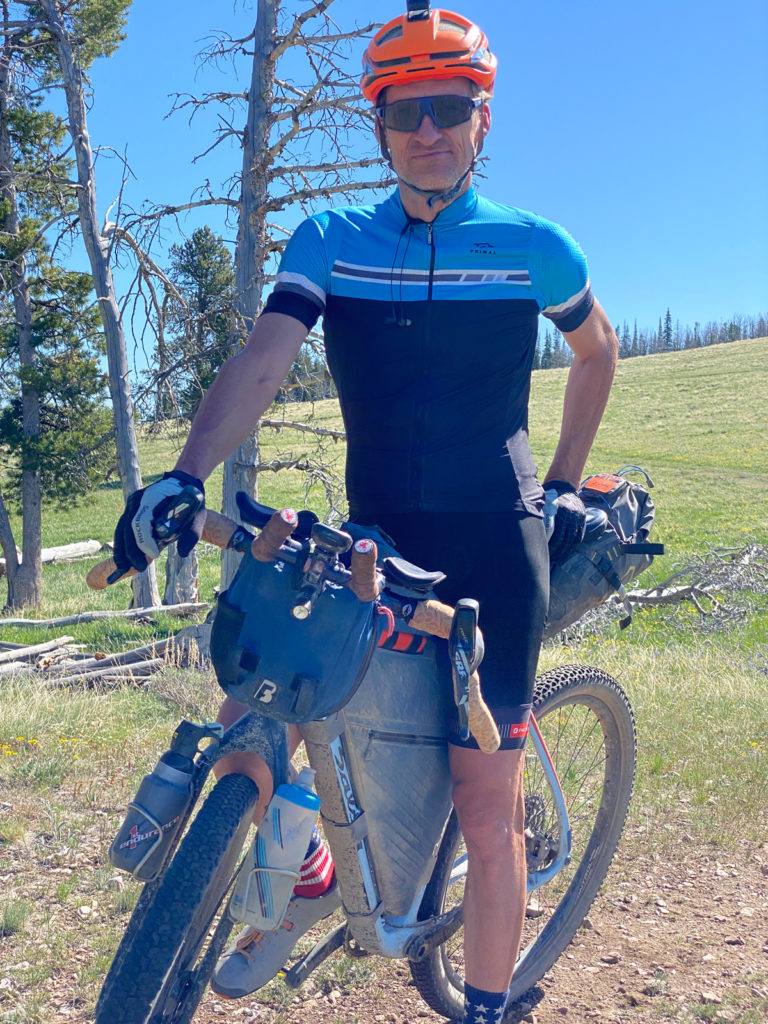
Over the subsequent years, I started focusing on what it would take to race the TD. I studied bikes and gear. I constantly read about the route and others’ experiences on the route. Most importantly, I started increasing my training volume. I continued to ride with friends and race local events. Additionally, I looked for ways to start feeling comfortable riding all day and for multiple consecutive days. I commuted to and from work on bike over the Alpine loop, a 2.5 hour ride with almost 4000’ of climbing. I tried to plan day-long rides a several times a month, and most importantly, I looked for multiday routes. These rides allowed my body to adapt to the rigor of 16+ hours in the saddle, on a loaded bike, for multiple days. They also allowed me to test gear and prepare my mind for the inevitable physical low points that come from pushing the body. Another major advantage was seeing so much of the remote intermountain west on a bike. I rode fantastic routes in the deserts of Utah, Sawtooth mountains of Idaho, the Sierras in California, the San Jauns of Colorado, and the mixed terrain of Arizona. Each of these adventures taught me about my body and my mind, allowing me to slowly accept the idea of longer distances and bigger adventures.
In 2017, it was time to attempt the Tour Divide. At this point I had trained for several years, and I felt I was ready both physically and mentally. I was not. After pushing hard for 6 days, I withdrew from the race in Lima, MT. My knees and achilles were both extremely swollen and painful making every pedal stroke excruciating, and my grandfather, with whom I was very close, passed away during the race. I had raced well, finding myself in the top ten over those 6 days, but I was also devastated by my early exit. To give an idea of what a single day was like on the TD, here is an excerpt from my journal of the 2017 race:
Day 2: Fernie, BC – Tuchuck CG, MT (150mi, 12,500’)
After tossing and turning and dosing for a few hours, I rolled out of bed, packed up my drying gear, and was out the door by 5:00am. I made a stop at the 7-11, loaded up for a big push to the US border, and headed out of Fernie as the sun was just beginning to show some life. It looked to be a beautiful day. I stopped by the bike shop, which had a convenient hose for washing the bike, and gave my bike a little cleaning and lubing. The pavement turned to gravel and the climb went on and on. I ran into Andy from Boise pulled over on the side of the road, fiddling with his bike. Andy and I rode together for part of the Smoke-n-Fire race in Boise earlier in the fall, and I was hoping we could ride some more when I caught him. Unfortunately, he was having derailleur issues, and he decided to roll back into town and wait for the bike shop to open. I never saw Andy again, but he had a strong finish. I pushed on up the climb, with the views becoming more and more spectacular. Once I reached the summit of the climb, the sun was finally coming over the peaks just in time for a smoking fast descent. I loved the mornings: the anticipation of the sun, the process of getting my legs, and the serenity of solitude in some of the most beautiful places on earth. My knees and Achilles took some time (and Tylenol) to warm up and feel OK. I knew this was going to be something I was going to have to manage and be smart with over the days ahead. My knees would scream at me during the steeper parts of the climbs, and my Achilles were stiff and sore in the mornings and again in the evenings. “All part of the experience,” I rationalized.
Around lunchtime I stopped at Butts cabin for a break and some food. There were signs of people around, as evidenced by a couple trucks, but I didn’t see anyone. As I finally got on my bike to head up the road, some guys pulled up near me in their truck. The exchange was pretty funny:
Big Truck Guys: “You’re not going down that road, are you?”
Me: “Uhhh, yeah.”
Big Truck Guys: “Are you carrying a gun?”
Me: “Bearspray.”
Big Truck Guys: (Laughing hysterically for 30 seconds, finally stopping, catching their breath) “Well, you can go down there if you want to, but there’s a Grizzly with her cub in that field, and she’s not going to be happy to see you.” (now talking to me with a lecturing tone)
Me: “Hmmm, ok. Thanks.” (I start to ride up the road)
Big Truck Guys: (Yelling from their truck) “Hey, didn’t you hear me! What are you stupid!?”
Me: (Waving, but not turning back to look at them) Now I’m thinking to myself, yep, I am stupid.
I never saw the bear, and I wondered if they were just messing with me, but what was I going to do? Turn around and go back to Fernie? I didn’t have an option but to go forward. During the days, I was never scared of possible bear encounters, but I must admit, riding at night did have me freaked out at times. More on that later.
Not long after this, Thomas caught me, he looked like he was doing well, and this gave me a chance to ride with someone for a while. I picked it up a little, and we chatted. We spent quite a bit of time together over the first 4 days. He was a good dude: easy to talk to and we both liked bikes – what more could you want? The scenery through this area was amazing. The dirt roads were also great, and we crossed a number of really nice bridges that seemed too nice for an area that appeared to get no traffic. We eventually made our way onto a fast double track in a forest of small firs. This is when I stumbled on my 1st black bear, which took off like a bolt of lightning as soon as we came around the curve into view. We were within 50 feet of the bear, and the fact that it took off so quickly was confidence boosting to me.
Eventually, I made it to “the wall,” a relatively short hike-a-bike that requires some serious pushing and lifting. I muddled my way up the steep, muddy game trail that connects to another double track and eventually a dirt road leading up and over the last pass in Canada. The wall wasn’t as bad as some had suggested, but it was a little different than I anticipated – wetter. Eventually I got over Galton pass, where just a little bit of snow still covered the roads at the top and descended the dirt road to the border crossing. I saw one more black bear on the descent, which took off as soon as it saw me. Another boost for my bear confidence.
The border crossing was funny. The border agent was trying to convince me that the TD didn’t start until the following week. I tried to assure him that it had indeed started, but I finally gave up and told him to have a great day. I called Holly for the 1st time after crossing the border. I talked to her as I rode the back roads into Eureka, MT. It was good to talk to her and hear about all the people following me and cheering me on. It made me feel that there was another level of motivation that could keep me going when the days got long. I was spent and ready to sit down for a little while. I was trying to resist the urge to stop in Eureka for the night.
I reached Eureka, MT around 7pm, stopped at the convenience store and Subway, and tried to force down some food. For me, eating is difficult over the 1st few days as my body tries to deal with the physical demands, lack of calories, and how both affect my GI system. I managed to gag a foot-long sandwich down, and I loaded up on stuff I thought I might want to eat over the next day (chips, nuts, candy, pastries, etc.). Thomas came in to eat as well. He talked about stopping at the south end of town at a campground, but I had my sights set on Sondressen community center, another 45+ miles and a big pass (Whitefish Divide) to go. As I headed out of town along some more back roads, one of my brake pads was rubbing. For some reason, I tend to get irritated by such things, but I never want to stop and fix it. Finally, I decided to stop and adjust my front brake. Sure enough, I overtightened the torx 25 bolt and snap, the tip of my t25 wrench broke off in the caliper. Immediately I felt like I just ruined my race, but I was able to calm down and reason that it would be ok – well as long as I didn’t need a t25 wrench.
I crossed the highway and started toward the Grave Creek road which climbs up Whitefish Divide. I could see there was a storm brewing in the mountains, and I wasn’t looking forward to riding into it as the sun went down. As I was making my way up the last of the pavement, an old pickup was coming down slowly, looking at me. For some reason it made me nervous, and it made me even more nervous when the pickup turned around and started back up towards me. I was thinking this is where Josh Kato had gotten run off the road the previous year. Instead, the guy rolled up beside me and asked if I was part of the TD. Turned out, he was following the race in his truck, and he hoped that one day he could do it on a bike. We chatted. He wished me well and continued up the road. I stopped at a pavilion at Birch Creek pavilion at the end of the pavement. I sat there as it started raining, and I thought this would be a good place to sleep; dry and seemingly safe, but it was still light. I sat there for 20-30 minutes trying to convince myself to keep going when I saw Thomas ride by. That was all I needed. I put on my raingear and took off after him. It was wet and getting colder, but at least I could ride with someone. The last hour or so of daylight went quickly, and before we knew it we found ourselves in the middle of nowhere. Avalanche debris covered the road in places, and it was obvious that this area had not yet recovered from winter. To make matters worse it was getting hard to see as the sun was fading. It was at this point that Thomas said, “oh crap,” and came to an abrupt stop. I looked up, and had the same reaction as my stomach immediately felt sick. About 100 yards in front of us was the biggest grizzly I had ever seen – maybe the biggest animal I had ever seen. I starting thinking about my options. The road was such that there was no place for the bear to go – vertical cliffs to our left and a big drop down to a stream on our right. The bear was moving up the road the same direction we were going, but it didn’t look like it was in any hurry to get away from us (unlike the bears I had already encountered). I considered going back to the pavilion at Birch Creek campground, and if I was by myself I may have, even though I had already gained many miles and well over 1000’ of elevation since the pavilion. We decided to get off our bikes and walk, bear spray in hand, and start blowing our whistles. So, that’s what we did, trying to keep our distance and still maintain visual contact, which was getting harder as it got darker. We did this for about 15-20 minutes. I’m pretty sure it wasn’t that great of an idea. When I told this story to my colleague, Tom Smith, a bear biologist, he just shook his head in disapproval. Every couple minutes, the bear would pause, turn, look at us, and continue to saunter up the road. I imagined the bear thinking to himself as he looked at us, “should I go eat them? Ugh, it’s just too much effort, and they smell really bad.” I was biting and blowing the whistle so hard that my jaw hurt and my ears were ringing, but I was wired. The adrenaline was flowing at high levels. Eventually it got too dark. We couldn’t see the bear anywhere. When we came to the next avalanche debris shoot over the road, we didn’t see any tracks in the snow. Now I was even more spooked. I had no idea where the giant grizzly was, and there was no way I would see it coming at me in the dark. In a panic, I put on the rest of my lights, we got on our bikes and started riding. As we crested the summit I stopped to add more layers, constantly looking all around me for the killer bear. I was soaking wet, it was cold, and now I was about descend, still freaked out by the bear encounter. With that said, I was ready to go fast and take advantage of the descent. I took off, still blowing my whistle. Not 5 minutes into the descent, another bear ran out onto the road 20-30 feet in front of me. I was so stiff and cold that I didn’t even stop. Instead, the bear was running down the road in front of me, eventually peeling off the road. Once I got far enough down the road, away from where the bear peeled off, I stopped. I was definitely in a bad place mentally. I was a basket case. Physically I was exhausted and really cold. I finally coaxed myself back onto the bike and slowly inched my way down the descent. What should have been a screaming descent, turned into an agonizing slog. I was done. Around 11:30 we rolled up to Tuchuck, a primitive campground. I wandered around looking for shelter. I had no intention of sleeping outside. It was an answered prayer to find a relatively clean toilet block. I have never been so happy to see a primitive campground toilet. I gagged down some food, rolled out my sleeping bag, and hunkered down with my head next to the base of the toilet and my feet wedged against the door. Between the sewage gurgling from under the floor and the image of an Uncle Buck style bear entrance, I didn’t sleep much; but I was warm and safe.
In 2018, I returned to Banff for another TD attempt. I learned from my failed 2017 attempt. I had done a fair amount of eccentric training for my knee and Achilles issues, made a few adjustments in bike fit, reduced the overall volume of my training, and had the previous years’ experience to draw from. I wanted to push myself, but stay away from expectations. While the 2018 race was not without mistakes and issues, it was a great success. I completed the 2725 mile route in 16 days and 7 hours, placing me 4th overall in a field of approximately 200. It was an incredible adventure, but incredibly hard and at times, lonely.
In addition to successfully completing the route, my colleagues and I collected data on what happened to my body over the 16+ days. My circulatory system, immune system, and GI system took a significant hit. Systemic inflammation was also extremely high. The extreme workload, limited sleep and recovery, and poor nutrition took its toll on the body. That said, there were measured adaptations to muscle that signaled a shift towards efficiency in energy production and increase in force production. In other words, while the body broke down to some extent, it also adapted in a pretty incredible way to keep the legs turning.
The story of my 2018 TD adventure and a complete breakdown of what happened to my body are documented in my book, “Just Ride.”

Following 2018, I continued to ride and train. I rode the Arizona Trail and the Colorado Trail as well as several other multiday routes, but it was hard to get the TD out of my head. The route is so big and beautiful. It offers a variety of people, landscapes, and challenges. Every turn on the trail is an adventure. I missed it, and I wanted to go back. Additionally, my good friend Adam Lisonbee, wanted to go back and ride the route. So, we decided we would ride it in 2020, BUT we do so at a pace that allowed us to appreciate the route more and meet more people on the route. In other words, we would ride the route a little slower.
The 2020 TD was cancelled, so we pushed to 2021. The 2021 edition of the race was complicated by the Canadian border remaining closed. So, the 2021 edition would be a border to border (no Canadian section) route, called the Great Divide Classic (GDC), commemorating the original route prior to the Canadian section. The route still followed the continental divide through Montana, Idaho, Wyoming, Colorado, and New Mexico for approximately 2500 miles.
I must admit, I did not take a serious approach to the 2021 GDC. I didn’t train as much, I already had my gear dialed, and I had been on the route several times. After all, I planned to slow down and enjoy the route and the people. This was a mistake. Good preparation makes for an enjoyable adventure, and I was not well prepared. I entered the race 15 pounds heavier than I was in 2018, and I overestimated my fitness. That said, I had no expectations. Adam and I were excited to be on the route.
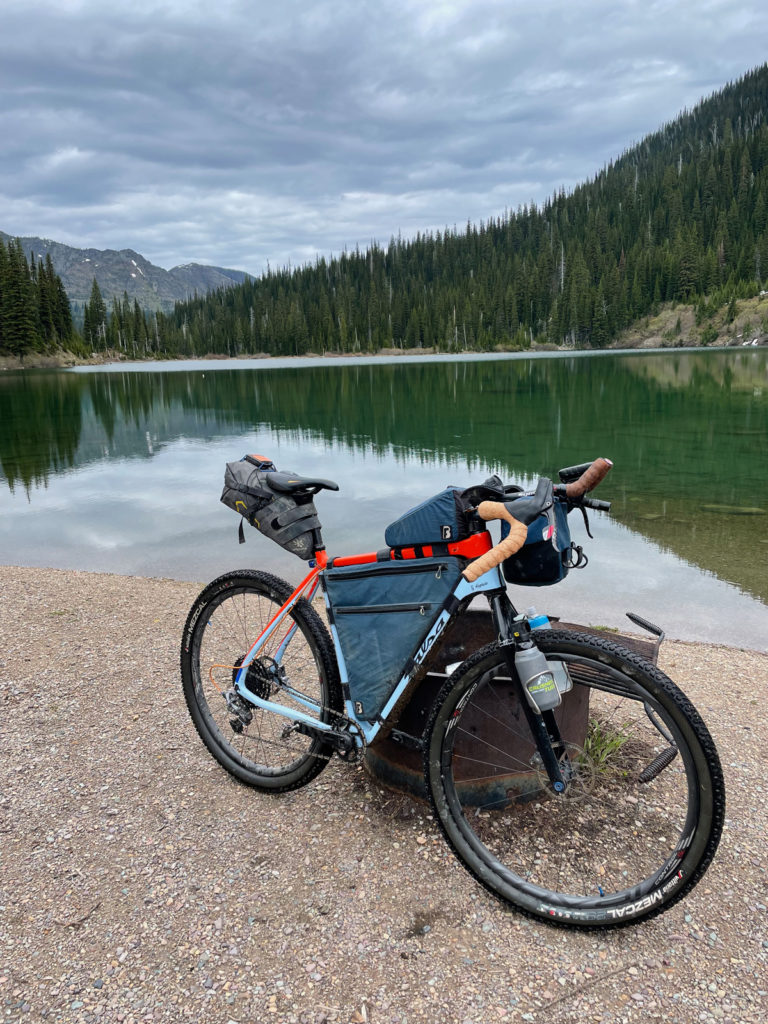
The route did not disappoint. The race started at noon from the border crossing at Roosville and the easy rollout took us through Eureka, MT before entering some of the densest grizzly bear country in the world. This year, however, I had the company of dozens of other riders as we made our way over Whitefish Divide, into the area northwest of Glacier National Park, and then up and over Red Meadow Lake Pass. It was a cool 100 miles as we exited the mountains into Whitefish, MT and made our way along peaceful rural roads to Columbia Falls, MT where we stayed for the night. It really was a great 1st day. The variety of riders and the company they provided was what I was hoping for. This was fun.
One of the lessons I have learned from ultra-racing is that the body will wake up in full revolt to doing another day, churning up big mountain passes. The mind will always tell you there is no way it can do another day like the previous day. But it does. It takes a little time and some calories, but the body always bounces back. The 2nd day was no different as I was stiff from the previous day. We started early, around 4am in constant rain. We made our way through the Flathead Valley skirting the western edge of Glacier National Park before entering a series of long, dirt road climbs making their way into the Swan River valley. The day was tough for 2 reasons. First, it rained for the 1st 8 hours of the day, and second, I was having a hard time with my GI system. Ever since 2018, I had struggled to eat the calories I needed without my GI revolting. The easy thing to do is to stop eating, but this is an unsustainable strategy. When you ride a loaded bike all day on limited calories, the inevitable bonk is coming. I managed to snack here and there, but I suffered mentally and physically while I waited for the medication to kick in. As the day progressed, my mood and power faltered. Fortunately, we were riding with a good group of racers. Backgrounds ranged from retired accountant to bike shop wrench with huge ranges of age and philosophy. Meeting the variety of people was the best part of the day and the instant bonds that are formed are one of the best parts of the race. By the time we got to base of the biggest climb of the waning day, I was physically and mentally spent with no calories in the tank. I suffered up the massive climb for hours, hiked through a couple miles of snow at the top, before finally being rewarded with a long, fun, fast descent. While, painful and slow, the day had been a success as a burrowed into my sleeping bag for a few hours of sleep before doing it all over again.
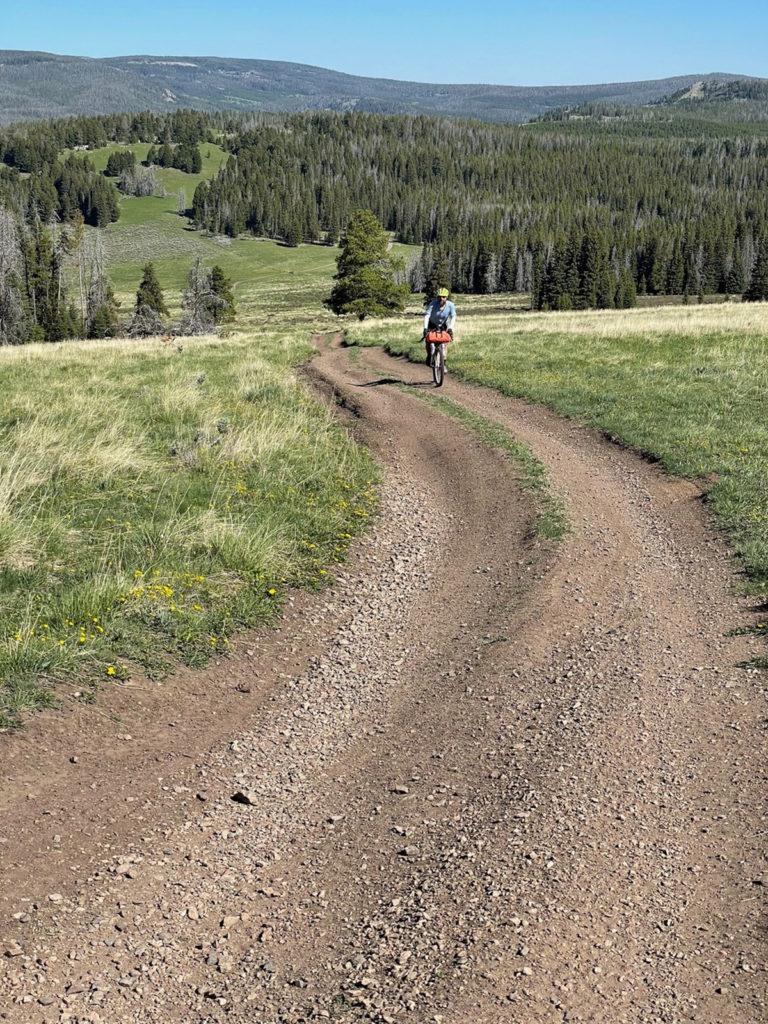
The next days were filled with incredible mountain vistas, crystal clear lakes and streams, and some scorching temperatures. We climbed over Poor Man’s Pass, Huckleberry Pass, Fleecer Ridge, and dozens of other giant passes. We were met by numerous trail angels – Kathy in Ovando, the Nyes prior to Helena – who tried to give us encouragement and food with the payment of simply paying it forward. We saw wildlife galore in some of the most remote and pristine wilderness in the United States. We also suffered heat, dehydration, sleep deprivation, and the aches and pains that come from sitting on a bike saddle for 15 hours a day. It was all worth it.
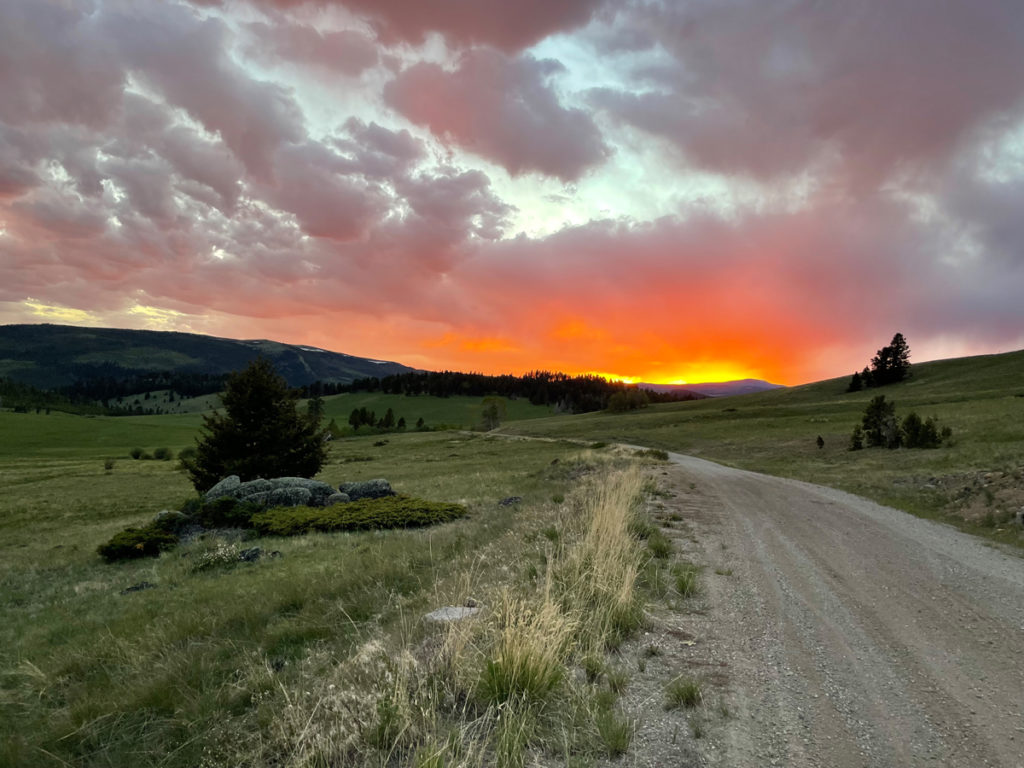
On day 7 we slowly worked our way over Union Pass in the Wind River Range of Wyoming. At the summit, above tree line, I ate some food while watching the sun set. The view was incredible – 360 degrees of brilliance. No people, no sounds, and the fresh smell of rain. It was perfect. When Adam arrived we mounted lights and descended, looking for a place to roll out our bivies. The night before we literally froze sleeping above the Snake River near Jackson Lake, and we were determined to find a place away from water that might not be so cold. By luck we happened upon an open forest service warming hut. What an incredible find! We were ecstatic.
The next day we finished the descent off Union Pass through herds of cattle being driven to new grazing pastures up the mountain. Then we rode the 30+ miles of pavement to Pinedale, WY. There, Adam and I talked about what we wanted to do. We decided we had gotten what we wanted out of the ride. A little less prepared than we wanted to be, we decided we would leave the route with a little meat still left on the bone. We completed 1000 miles of the route, we felt good, and it was time to go home. It was nice. I didn’t feel like I had failed. I had simply done what I wanted to do.
The TD is a route I really love. There are sections that are extremely hard. There are sections that are boring. Most of the route is incredible. I think I’ve got one more fast one in me. Until next time.


Great ride summary Ty…felt like I was there with you. Congratulations on the 1000 mile success!